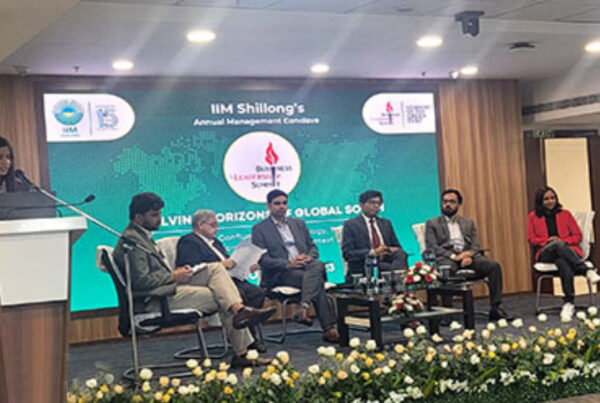Why open banking?
Open banking is gaining rapid traction the world over.
Growth in open banking is led by two major factors: adoption of digitalization, especially in the aftermath of the pandemic; and integration of AI and big data in banking services. Because of these reasons, the payment ecosystem has changed. The increase in usage of e-commerce platforms, coupled with increasing broadband connectivity and the use of APIs, is boosting growth in the market.
Little wonder then that consumer behavior has changed significantly, especially over the last few years. Another interesting resultant trend is the rise of FinTech, that has transformed the movement of money. Equally important is the validation of these trends by regulatory authorities—they are increasingly coming up with favorable regulations to boost growth in the market.
The Indian case
The open banking market in India too is evolving, much like its counterparts in the rest of the world. This is largely attributed to the country’s requirements as a developing economy, such as in terms of inclusion regarding access to banking facilities and opportunities, and poor consumer experience.
Consumers are increasingly flocking to open banking, which seeks to address the issues associated with traditional banking marked by cash and ATM transactions, new accounts, internet banking transactions, etc. These include credit worthiness requirement, heavy and time-consuming documentation process, and breach of data.
This, coupled with disruptions in technology and the Center’s inclination to make credit available to the masses (bringing more customers within the purview of banking), has worked in favor of open banking solutions in the country.
Data attests to the potential of the domestic open banking market. According to information provided by three sources – News Indian Express August 2022, Business World August 2022, and India Briefings August 2022 – open banking recorded 611% growth in customer accounts from 180 million in September 2021 to 1.1 billion in August 2022. All 12 public sector banks and 10 major private sector banks went live on the Account Aggregator framework, bringing 1.1 billion accounts in the fold.
The foundation of the digital infrastructure in India was laid with the adoption of Aadhaar card for digital identity. Thereafter, several other building blocks were added that paved the way for open banking: UPI, Account Aggregator (AA), OCEN, DEPA, and PCI.
AA Framework
One of the most critical building blocks in India, it was launched by the RBI in 2021 to empower consumers by democratizing data. It seeks to facilitate digital access for consumers and enable them to share their information or data securely.
The framework is designed to help an individual access information and share it from one financial institution where they have an account with any other regulated financial institution through an RBI-regulated entity, i.e., account aggregator (with an NBFC-AA license). The key things are that the information is obtained digitally and securely, and shared only with the consent of the individual.
Eight banks have joined the AA network: Axis, ICICI, HDFC, and IndusInd Bank, that are sharing data; and State Bank of India, Kotak Mahindra Bank, IDFC First Bank, and Federal Bank that are likely to share soon, as per a press release by PIB Delhi on September 10, 2021.
The framework is built on the Data Empowerment and Protection Architecture (DEPA) to ensure the secure portability of data between different stakeholders.
These are Financial Information Providers (FIPs), Financial Information Users (FSUs) that together include banks, NBFCs, insurance companies, and registered insurance advisors (RIAs); Technology Service Providers (TSPs); and NBFC AAs.
Among TSPs, FinBox was one of the first FinTech companies to go live on the AA framework last year. It partnered with Finvu (AA) for the loan application process.
Benefits of AA
The AA framework addresses several hassles for consumers. Being a simple and safe, mobile-based application, it eliminates the need for tedious documentation, physical signatures, running around for attestation of copies, or sharing username/password with a third party for the disclosure of financial history. This could also lead to the creation of new services, for example, loans.
Its objective is to simplify access to loans and bring efficiency in money management for consumers. Today, both these processes are highly time-consuming, especially with data being stored in different locations, and given the requirement of physical collateral for loans.
Companies, on their part, get to avoid the cumbersome loan disbursal process because of the easy availability of the required data from a central location and streamlining of evaluation.
Response to the AA initiative
The open banking system is increasingly becoming intrinsic to India’s financial landscape. Amid the growing demand for digital services, competition among banks to offer innovative open banking solutions has increased.
As per the IMF, the labyrinth of public digital infrastructure and protocols in India provides a good base for interoperability and portability of service data based on the consent of the user.
Naturally, the response to the AA framework has been very positive.
Industry experts and media hail it as a revolutionary wave in the credit industry. Touting it as the “next UPI moment” and considering it as a major event in India’s open banking ecosystem, they believe this is the right time to educate citizens on why they need to adopt AA as the only means for sharing their financial data. The framework ensures confidentiality of information since verified data can be got only with the approval of the user from another AA participant with whom they may be banking.
To quote a few examples:
According to Financial Express (July 2022), “Account Aggregator framework is a boon to SMBs as lenders won’t be able to store, analyze, sell financial info. With the AA framework in place, India’s financial ecosystem will see a complete transformation. It will do to the credit sector what the United Payments Interface (UPI) did to the digital payments system.”
As per a report by Fin Box, published in Business World, the account aggregator framework reduced financial fraud by 45%, with nearly 71% of people choosing account aggregator to share data vis-à-vis other alternatives.
Challenges
As with every initiative, roadblocks are natural.
Regarding open banking, the key concern is to ensure the security of data. This will pave the way for its acceptance by financial institutions such as banks that see it as a disruptor of conventional practices and are therefore hesitant to adopt. They are skeptical of the level of exchange of data involved.
Yet another dimension that could pose a hurdle to these types of solutions is growing competition between banks and FinTech companies that are largely perceived as a threat to traditional banking service providers.
To conclude
Open banking solutions are all about putting customers at the center, meeting their expectations, and removing the pain points. While this will definitely help in achieving top-quality customer experience, the ramifications globally as well as for a developing country such as India are significant.
Digitalization will open the doors to democratization of finance. It will help in the inclusive and sustainable economic growth of a nation. It will pave the way for modernization of conventional banking practices, which is highly relevant for masses amid increasing financial and digital literacy.
It is, therefore, very important that challenges such as pertaining to security of data or the lack of collaboration between banks and FinTech companies are addressed head-on.
Digitalization is here to stay. It cannot be rolled back. The need of the hour is to embrace it to derive maximum advantage from the transformation. And, while doing that, iron out the issues that could compromise the very benefits it promises.
For more information on our research services and consumer insights, please connect with Suyog Keluskar, Director at Avalon Global Research.




